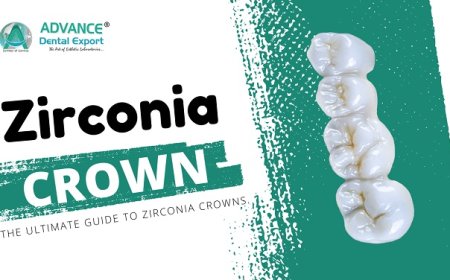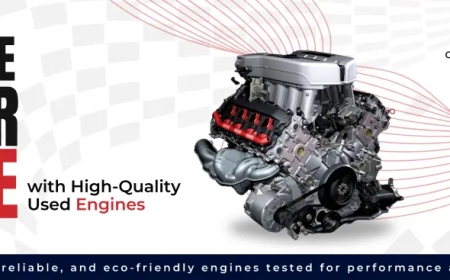Wrecks with a Past: The Forgotten History Lurking in Junkyards
Explore the hidden stories behind junkyard cars and how they reflect past times. Learn how to honour that history when asking, Where To Sell My Old Car.

Across Australia, junkyards hold more than twisted metal and broken glass. They carry hidden stories of once-loved vehicles, now resting under the sun and rain. Some of these cars were part of road trips, family holidays, work commutes, or important moments in people's lives. Each wrecked or discarded car holds its own past. Though rust has covered their surfaces, their stories have not disappeared.
This article explores how junkyards are more than storage yards for scrap. They are places where history waits quietly, marked by faded paint and worn seats. These vehicles may no longer run, but their presence tells us something about where we have been and how the car culture in Australia has changed over the years.https://cashforcarsnsw.com.au/
The Role of Cars in Everyday Life
In the past, cars were not just about transport. They were a part of peoples identity and lifestyle. From the Holden Commodore to the Ford Falcon, certain models became symbols of Australian culture. Many families took pride in their vehicles, cleaning them on weekends and showing them off during long drives.
As decades passed, changes in technology, fuel use, and design led to newer models replacing the old. The cars that once filled streets and driveways slowly vanished, and many ended up in junkyards. But they still carry the look and feel of their time.
Junkyards as Time Capsules
Walking through a junkyard feels like stepping into another time. You might come across a 1970s panel van with worn-out upholstery and stickers from concerts long past. Or an old ute still carrying tools in the tray. These details paint a picture of how people lived and what they valued.
Some junkyards still hold rare or limited models, parked beside vehicles from common city roads. A broken-down taxi from the 1990s, a rusted-out campervan from a backpacker tripthese wrecks reflect different chapters of history. They are more than scrap. They are evidence of trends, habits and memories now gone.
The Personal Stories Behind the Steel
Every car in a junkyard had an owner. Some were passed down through generations. Others may have been bought after years of saving. Some vehicles may have been part of major life events like weddings or moves to new cities. While those stories are often forgotten, the car remains.
Many junkyards keep photos, records or parts from vehicles that had special meaning. People who visit might find a part from their old car or something that sparks a memory. These places hold emotional value, not just mechanical leftovers.
Turning History into Resources
Even though these cars hold memories, they also have materials that can be reused. Once a vehicle is too damaged or aged to repair, it enters a new phase. The parts are removed, sorted, and reused if possible. Steel, copper, and aluminium are recovered. Seats, radios, and even mirrors can find new homes.
This process helps reduce waste. When we reuse metal, we save energy. For example, recycling steel saves around 75 per cent of the energy needed to make it from raw materials. That supports cleaner land and air, and it stops useful resources from being buried in landfills.
Legal and Environmental Responsibility
Junkyards are required by law to follow safe methods when handling cars. Fluids like oil, coolant and brake fluid must be drained and stored. Batteries are removed and sent for proper treatment. Tyres are often shredded for reuse in building projects or road layers.
In Australia, state regulations also require detailed records. This ensures safety and helps track materials that are processed. It also makes sure that harmful substances do not pollute land or waterways.
Public Interest in Vehicle History
There has been growing interest in the stories behind old cars. Some people visit junkyards to find parts for restorations. Others go to take photos or research specific models. Social media has helped grow this curiosity, with people sharing images of old wrecks and asking about their past.
Even museums and schools have begun to use junkyard finds as educational tools. They show how car design has changed and what those changes say about society. Junkyards can help connect younger people to a time before screens and smart devices.
A Real-World Need and A Simple Choice
Often, people are left wondering Where To Sell My Old Car once it stops working. Letting it sit in the driveway takes up space and can cause oil leaks or tyre damage to the driveway surface. Sending it to a yard that follows proper recycling steps allows the car to end its journey the right way. Not only is it cleared out of your life, but it also returns to the cycle of use, in some shape or form.
Many people choose services that collect and pay for these vehicles. One such service is known for making the process smooth and respectful of both legal and environmental rules. They often work with yards that know how to handle older cars and understand the value in both their materials and their story. It can be the most responsible answer to the question, Where To Sell My Old Car.
Closing Thoughts
Junkyards may not seem like places of meaning at first glance, but they carry parts of our shared past. They remind us of the cars we used to drive and the lives we once lived. These spaces hold history in metal formvehicles that once had purpose, now still giving something back, either through memory or material.
When you walk past rows of wrecked cars, think of what they once were. A taxi full of daily passengers. A wagon loaded for camping. A sedan taking someone to their first job. All those stories are still there, waiting beneath the rust.


































